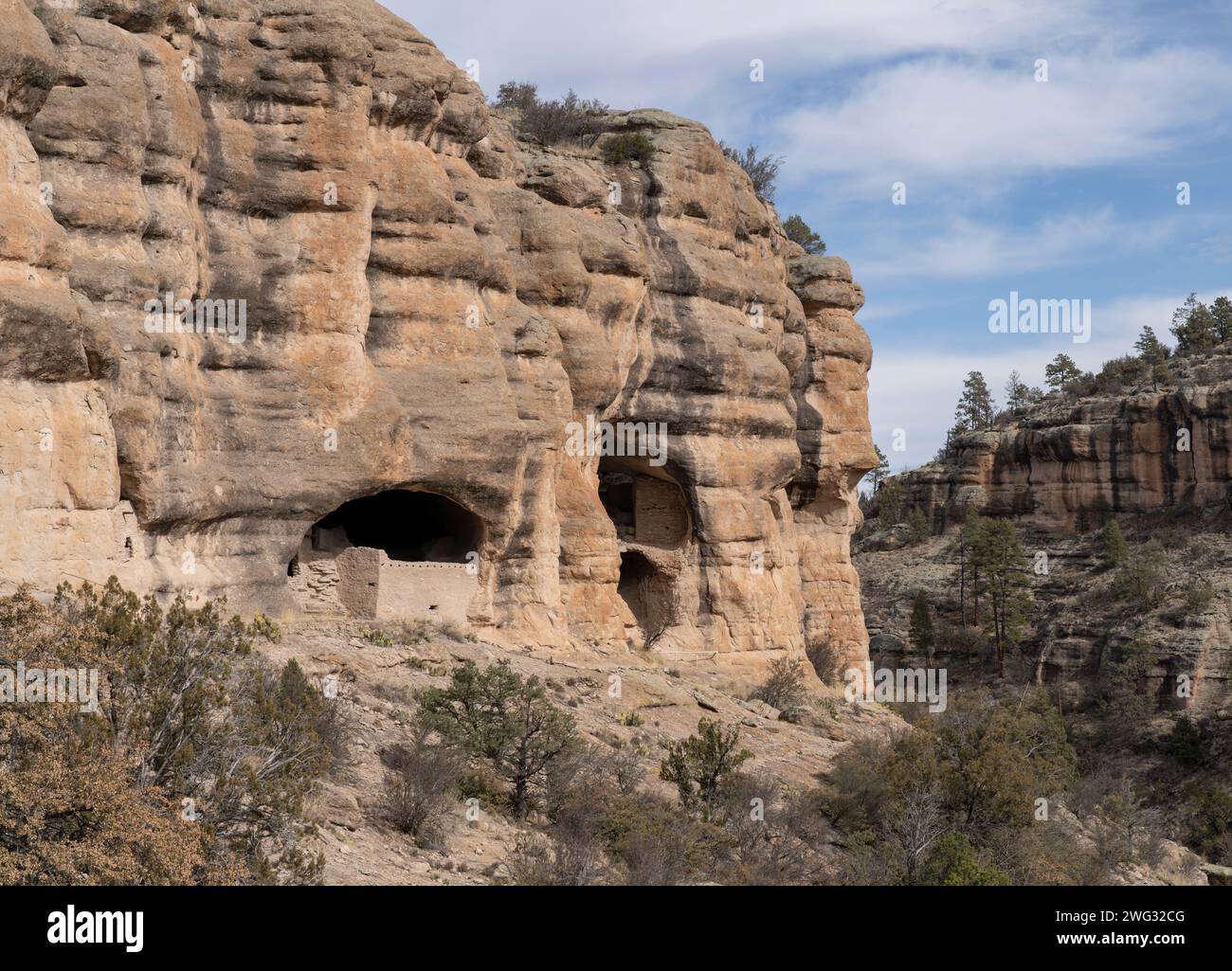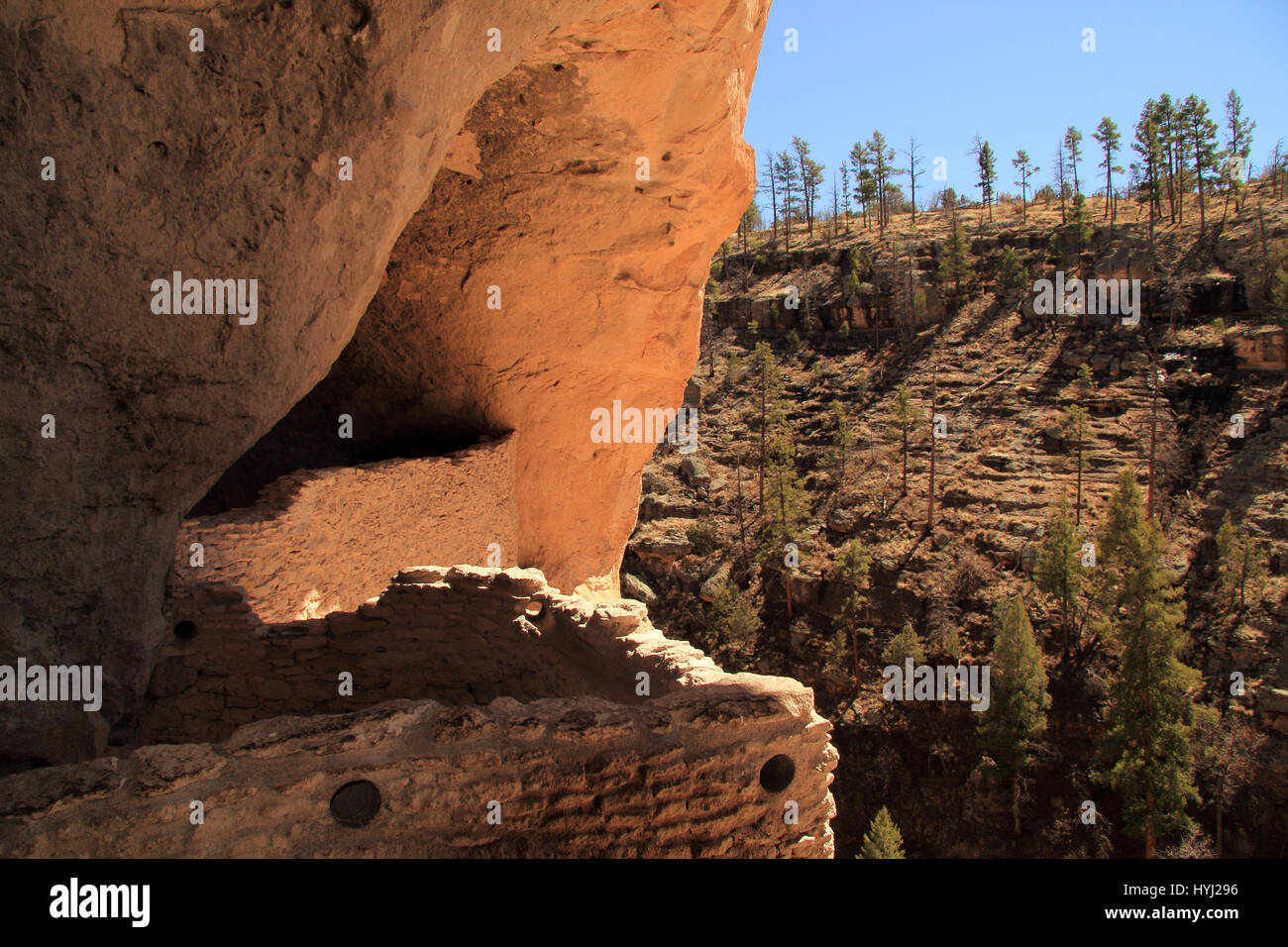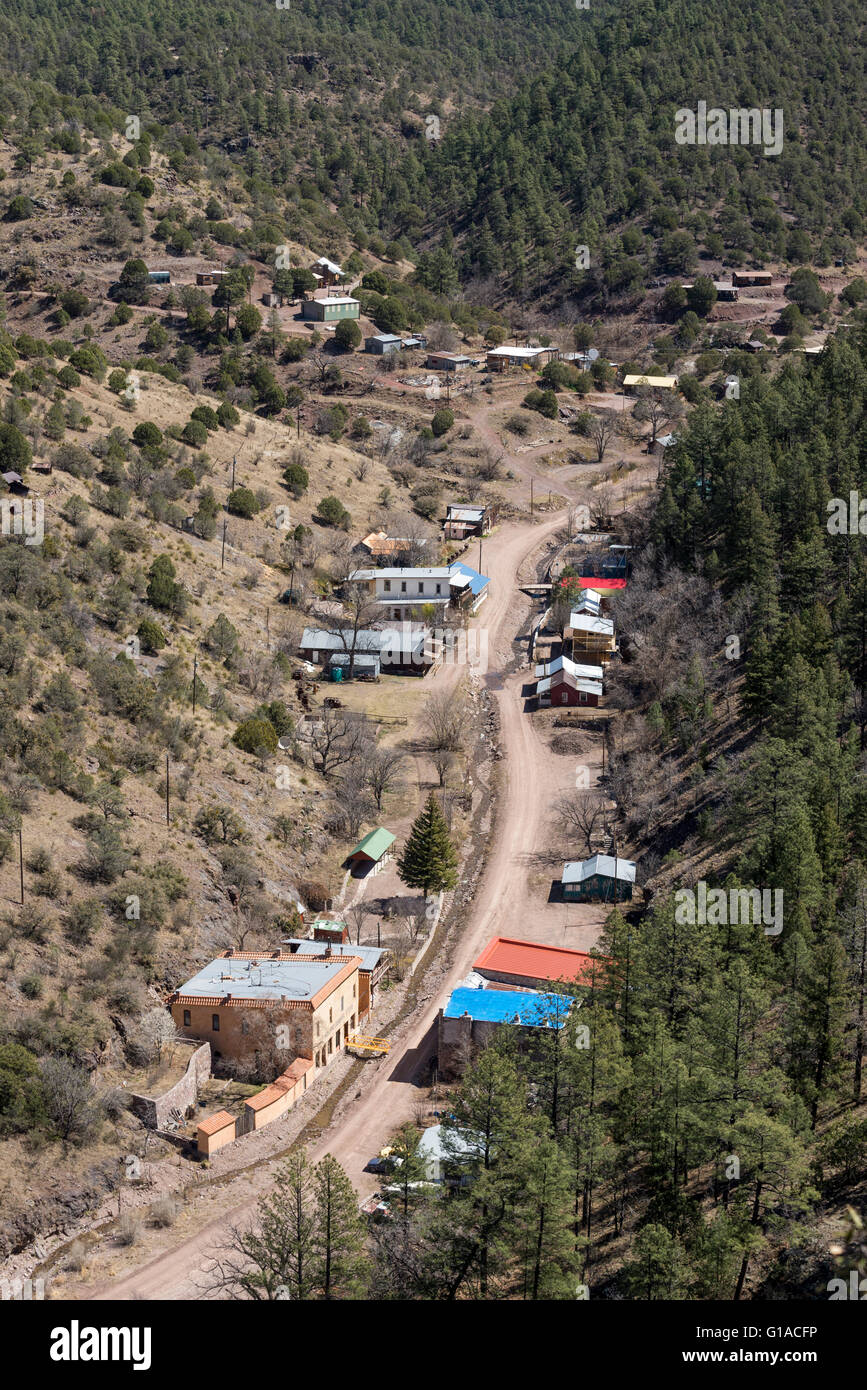
Mogollon: New Mexico’s Untamed Heart
Imagine a land where the sky truly feels bigger, where ancient whispers echo through canyon walls, and the wild still reigns supreme. This is the Mogollon, a rugged and majestic expanse in southwestern New Mexico that defies easy categorization. More than just a mountain range, the Mogollon represents a confluence of deep time, untamed nature, and human resilience, a place where history is etched into every rock face and the spirit of wilderness permeates the very air.
Spanning across portions of Catron, Grant, and Sierra counties, the Mogollon Mountains are the highest and most extensive range in the Gila National Forest. They form a dramatic, pine-clad backbone that rises abruptly from the arid Chihuahuan Desert, creating an ecological "sky island" where cool, moist forests thrive amidst a sea of scrub and cactus. This striking transition, from desert floor to alpine meadows, is just one of the many contradictions that define the Mogollon, making it a place of profound biodiversity and breathtaking beauty.
A Tapestry of Time: Ancient Cultures and Apache Strongholds

The name "Mogollon" itself carries layers of history. It is derived from Don Juan Ignacio Flores Mogollón, a Spanish Governor of New Mexico in the early 18th century. However, the human story here stretches back millennia, long before European footsteps touched its soil. The region is the namesake of the ancient Mogollon culture, a distinct group of indigenous people who inhabited these lands from roughly 200 AD to 1450 AD.
Unlike their Ancestral Puebloan neighbors to the north, the Mogollon people developed a unique cultural trajectory. They were skilled potters, leaving behind the distinctive and highly prized Mimbres pottery, known for its intricate black-on-white designs depicting human figures, animals, and geometric patterns. These bowls, often found intentionally "killed" (a hole punched through the bottom) in burials, offer a poignant glimpse into their spiritual beliefs and sophisticated artistry. Their early settlements were often pithouses, later evolving into pueblo-style structures nestled into canyon walls or atop mesas, strategically chosen for defense and access to water. While the exact reasons for their eventual disappearance remain a subject of archaeological debate, their legacy endures in the scattered ruins and pottery shards that hint at a vibrant, resourceful past.
Following the Mogollon culture’s decline, the region became a vital territory for various Apache bands, particularly the Warm Springs Apache and Chiricahua. The rugged, broken terrain of the Mogollon Mountains and the Gila Wilderness provided an ideal stronghold for leaders like Geronimo, Cochise, and Mangas Coloradas, who famously resisted American expansion in the 19th century. Their intimate knowledge of the land, its hidden springs, and secret trails made them formidable adversaries. For the Apache, the Mogollon was not just a place of refuge but a sacred landscape, deeply intertwined with their identity, ceremonies, and survival. Even today, the spiritual connection of Apache descendants to these mountains remains strong, a testament to the enduring power of place.
The Lure of Riches: Miners and Mavericks
The late 19th century brought a different kind of visitor to the Mogollon: prospectors and miners, drawn by the promise of gold and silver. The most famous testament to this era is the ghost town of Mogollon, nestled deep within Silver Creek Canyon. Once a booming mining town with a population of thousands, it boasted saloons, dance halls, and a bustling main street. Life in Mogollon was notoriously tough, plagued by flash floods, isolation, and the ever-present danger of mining accidents.
"It was a wild, lawless place, but full of hope," remarked an old timer in a historical account from the early 20th century. "Every man thought he’d strike it rich, and some did, for a time."
Today, the remnants of Mogollon town stand as a poignant monument to those bygone days. Weather-beaten wooden buildings, a small museum, and the echoes of a vibrant past whisper stories of fortunes made and lost. While no longer a boomtown, a small community of hardy individuals still calls Mogollon home, preserving its unique character and sharing its history with intrepid visitors.
Aldo Leopold’s Vision: The Birthplace of Wilderness

Perhaps the Mogollon’s most significant contribution to American identity lies in its role as the birthplace of the wilderness concept. It was here, amidst the vast, untrammeled forests of the Gila, that the pioneering conservationist Aldo Leopold conceived of the idea of formally protecting wild lands for their intrinsic value.
In 1924, largely due to Leopold’s tireless advocacy, a 750,000-acre tract within the Gila National Forest was designated as the Gila Wilderness – the world’s first officially recognized wilderness area. This groundbreaking act set a precedent for future conservation efforts globally, culminating in the Wilderness Act of 1964.
Leopold, often considered the father of wildlife ecology and the American wilderness system, understood that true wildness was a finite and precious resource. He famously wrote, "Wilderness is a resource which can shrink but never grow." His vision for the Gila was not just about preserving pristine nature, but about safeguarding a place where humans could experience solitude, challenge, and a profound connection to the natural world – a place where "the language of the wilderness" could still be heard.
A Realm of Biodiversity and Adventure
Today, the Gila Wilderness, encompassing much of the Mogollon Mountains, remains a living testament to Leopold’s foresight. Its rugged terrain, characterized by deep canyons carved by the Gila and San Francisco Rivers, high peaks like Whitewater Baldy (10,788 feet), and vast expanses of Ponderosa pine, Douglas fir, and spruce forests, offers an unparalleled opportunity for true wilderness immersion.
The biodiversity of the Mogollon is astonishing. As a "sky island," it supports species typically found much further north, alongside those common to the Southwest. Elk, mule deer, black bear, mountain lion, and javelina roam its forests. The Gila River, one of the last free-flowing rivers in the Southwest, harbors unique fish species like the Gila trout. Birdwatchers flock to the area hoping to catch a glimpse of the elusive Elegant Trogon, a vibrant, tropical-looking bird at the northernmost edge of its range.
For the modern adventurer, the Mogollon offers a lifetime of exploration. Miles of challenging trails wind through its canyons and over its peaks, leading to remote hot springs, ancient ruins, and breathtaking vistas. Backpacking, horseback riding, fishing, and hunting are popular activities, but the greatest draw for many is simply the profound sense of solitude and escape from the modern world. Cell service is non-existent in much of the wilderness, forcing visitors to disconnect and reconnect with their primal selves.
Challenges and the Future
Despite its protected status, the Mogollon faces contemporary challenges. Wildfires, an inherent part of the ecosystem, have grown in intensity and frequency due to climate change, posing significant threats to both the forest and the communities nestled within its embrace. The Whitewater-Baldy Fire of 2012, for example, burned nearly 300,000 acres, becoming the largest wildfire in New Mexico’s history at the time. Drought conditions exacerbate these risks, placing further stress on an already delicate balance.
Conservation efforts continue to focus on managing these threats, promoting sustainable forestry, and educating the public about responsible wilderness use. Balancing the desire for access with the imperative to preserve the Mogollon’s wild character is an ongoing dialogue, one that echoes Leopold’s original concerns.
The Enduring Call of the Wild
The Mogollon is more than just a destination; it’s a profound experience. It’s a place where the grandeur of nature humbles the spirit, where the echoes of ancient cultures resonate, and where the very concept of wilderness was born. It challenges, inspires, and ultimately, transforms those who venture into its depths.
In a world increasingly dominated by screens and concrete, the Mogollon stands as a powerful reminder of what we stand to lose and what we must strive to protect. It is New Mexico’s untamed heart, a rugged and beautiful testament to the enduring power of the wild, calling us to listen to its ancient whispers and embrace the lessons it continues to teach.


